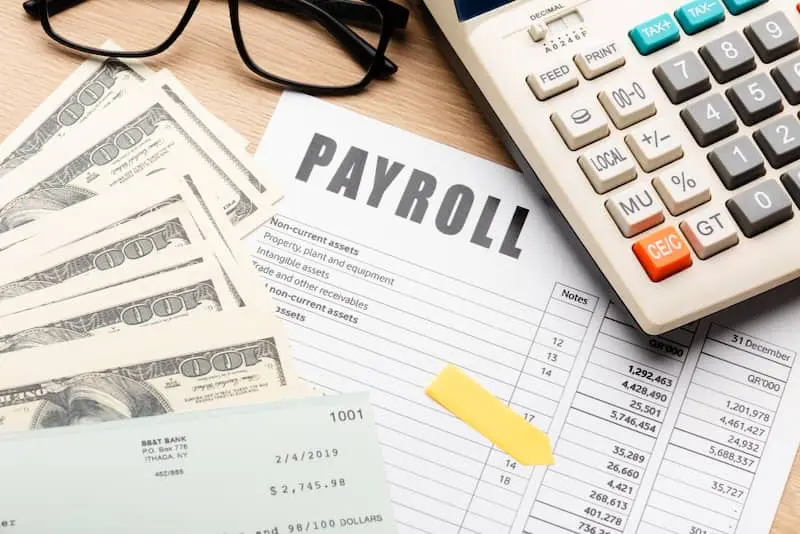There’s a quiet hero in some benefits packages you might not even know exists. It’s not flashy like a signing bonus, and it won’t get you watercooler bragging rights like unlimited PTO. It’s probably buried somewhere in your onboarding paperwork. But when life blindsides you or your employee with an injury, illness, or unexpected medical issue, this unsung benefit becomes a financial lifesaver.
We’re talking about paycheck protection insurance, also known as disability insurance. And while it doesn’t get the same attention as a health plan or 401(k), it’s the thing that keeps your finances standing when you’re suddenly unable to.
Let’s break down what it is, how it works, and why it’s something worth talking about before you need it.
Why Your Paycheck Deserves a Safety Net
You insure your car, your phone, maybe even your dog. But what about the thing that pays for all of that?
Your paycheck covers rent or mortgage, groceries, gas, childcare, medical bills, streaming subscriptions, and let’s be honest—a few too many online orders. Now imagine your paycheck stopped tomorrow. Could you go three months without it? Six? Or are you one bad day on the ski slopes away from losing it all?
For most people, the answers to those questions are pretty ugly. And yet, income protection is one of the most overlooked forms of insurance.
That’s where paycheck protection insurance comes in. If you’re too sick or injured to work, this coverage replaces a portion of your income, usually around 60%. It keeps the lights on when you can’t clock in.
And no, this isn’t just for folks with physically demanding jobs. Back pain, cancer, mental health issues, Hantavirus, and pregnancy complications don’t care what industry you’re in or what your job title is.
Short-Term vs. Long-Term Disability
Paycheck protection typically comes in two flavors: short-term and long-term disability insurance. They work together, but serve different roles.
- Short-term disability kicks in first. It covers injuries or illnesses that keep you out of work for a few weeks or months—things like a broken leg, surgery recovery, or severe anxiety. It fills the gap between your last paycheck and when you can return to work (or transition to long-term coverage).
- Long-term disability is the safety net for more serious, longer-lasting conditions. If you’re out for six months, a year, or even permanently, this is the coverage that steps in and stays with you.
Both are essential. Together, they form a parachute that protects you from financial freefall.
If your employer offers one or both, you’re in a great spot. If not, it’s worth asking about adding it. (More on that in a second.) And if you are the employer, make sure it’s on your list of benefits.
A Real-World “Glad I Had It” Story
Let’s say you’re a plant manager making $60,000 a year. That’s enough to cover everything you need plus some fun, and even to save a bit. You aren’t vacationing on yachts or driving supercars, but you’re doing well for yourself.
You’re driving to work one morning and your car slides off an icy road. The crash leaves you with a spinal injury that requires surgery and several months of recovery. You can’t sit for long, can’t focus, can’t work.
Without paycheck protection? You burn through your sick days, then PTO. Then you’re stuck. No income. Bills piling up. Recovery becomes way more stressful than it needs to be.
With paycheck protection? After a short waiting period, you start getting 60% of your regular income. It’s not your full salary, but it’s enough to keep your rent paid, the lights on, and your bank account from flatlining.
The financial difference is obvious. But the mental and emotional relief? That’s just as valuable.
Why Employers Should Pay Attention, Too
Offering paycheck protection isn’t just smart, it’s a signal that you truly care about your team. You’re not just saying “we’ve got your back,” you’re proving it.
Employees who feel supported during tough times are more loyal, more productive, and more likely to stick around. Adding disability insurance to your benefits package doesn’t have to break the budget, either. And the return on investment (in retention, morale, and reputation) is huge.
So whether you’re a business owner, HR manager, or team leader, it’s worth looking into.
What You Can Do Right Now
If you’re an employee:
- Ask your HR rep if disability insurance is included in your benefits.
- Start the conversation if it’s not. It can be as simple as, “Hey, have we ever looked into paycheck protection or disability insurance?”
- Consider personal coverage if your employer doesn’t offer it, especially if you’re the main breadwinner in your household.
If you’re an employer:
- Talk to an independent employee benefits brokerage about what it would take to add short- and long-term disability options.
- Educate your team on how it works. A benefit is only valuable if people understand it.
- Reassess your current offerings. If you already have coverage, make sure it’s comprehensive and well-communicated.
Because Life Doesn’t Give Warnings
You can plan your schedule. You can plan your career. You can even plan your kid’s birthday party down to the color of the cupcakes and the comic book character appearance. But you can’t plan when life decides to hit pause on your ability to work.
Paycheck protection insurance is the quiet benefit that turns chaos into calm. It’s the buffer between your injury and your bank account. The thing that keeps your bills paid while you focus on getting better.
So don’t wait until you need it to appreciate it.
Protect your paycheck like you protect everything else that matters.
Ask about it.
Talk to your team.
Start the conversation.
Need help starting that conversation or building a plan that works? The Benefit Doctor helps businesses and employees secure smarter coverage, stronger protection, and real peace of mind. We’re here if you want to chat.

